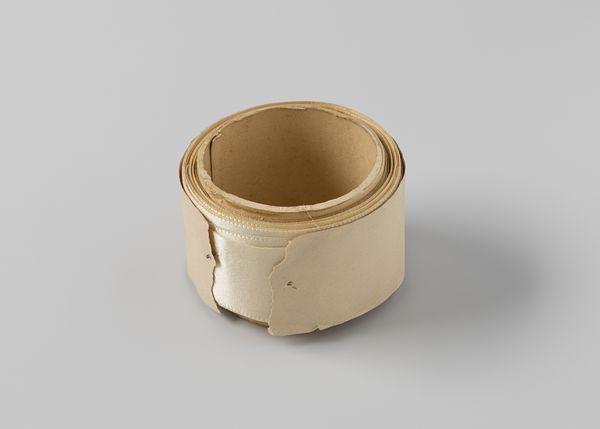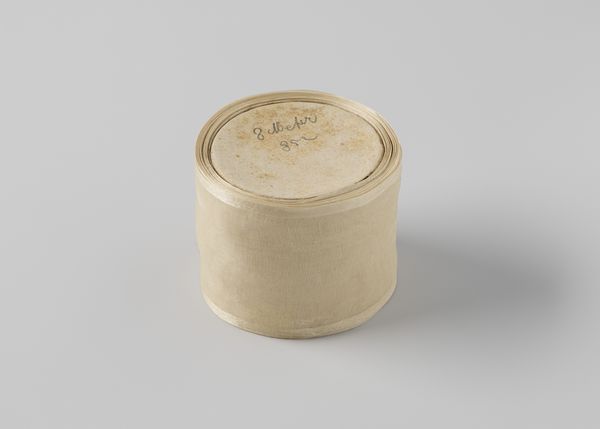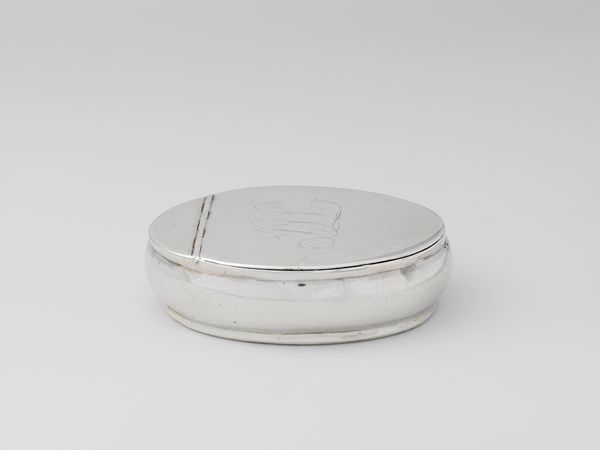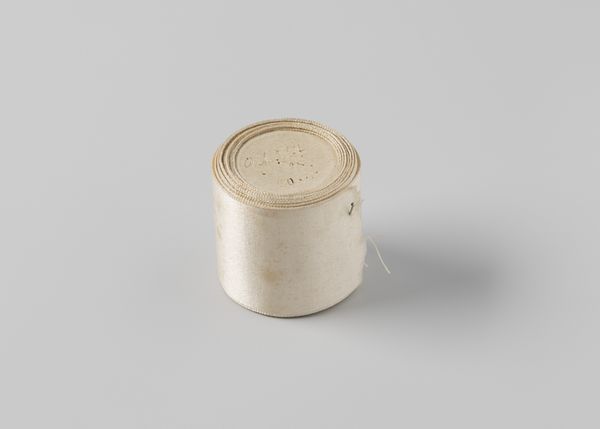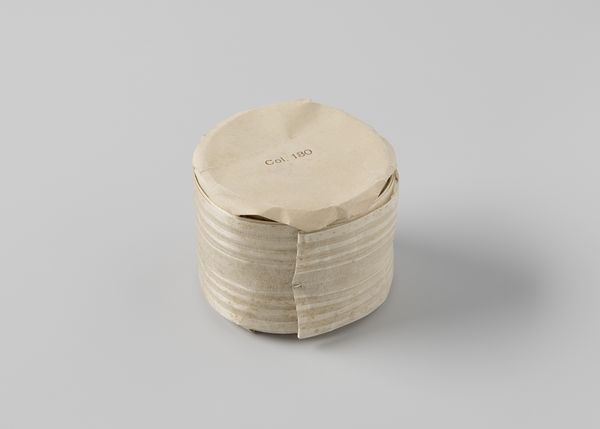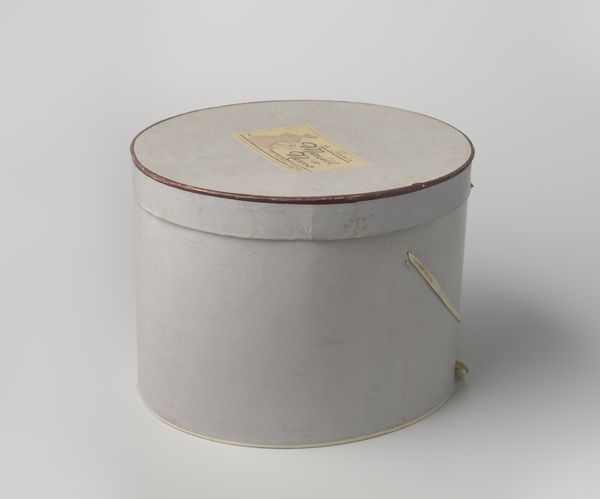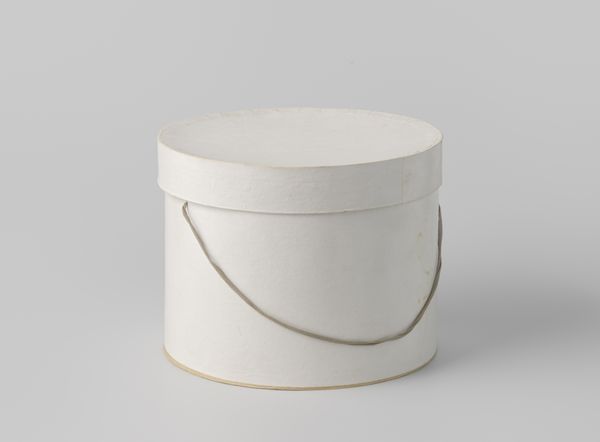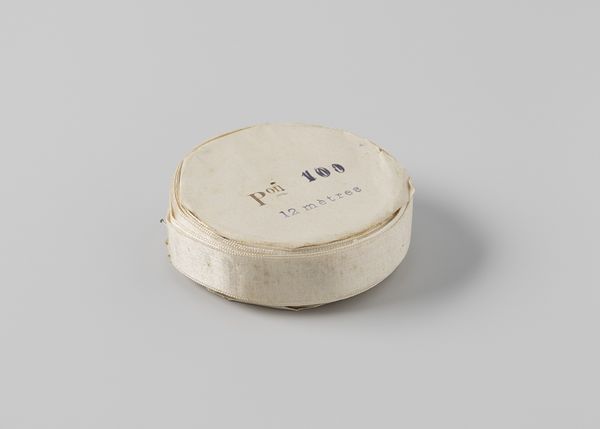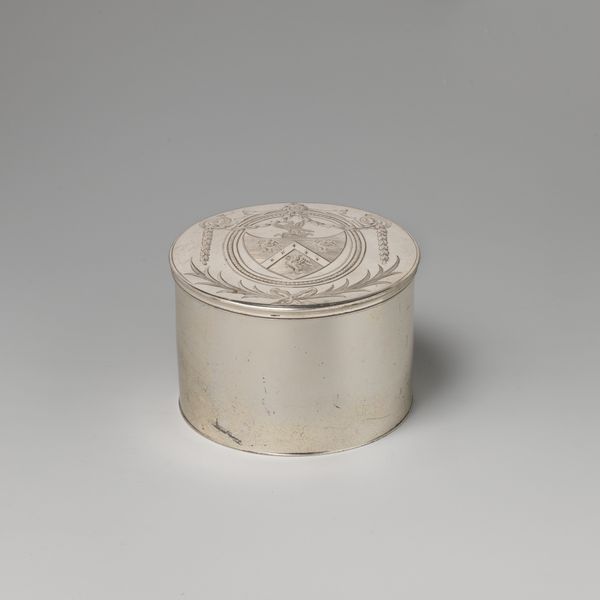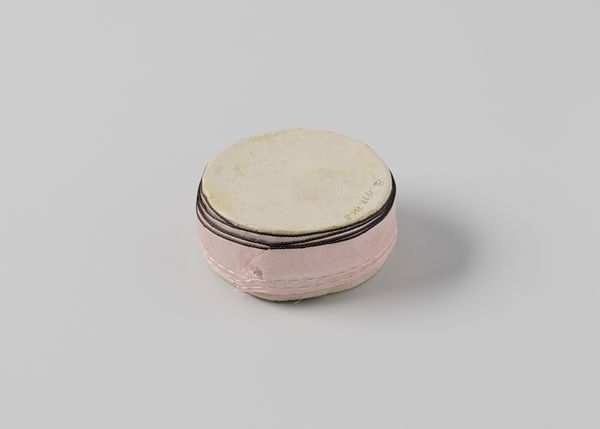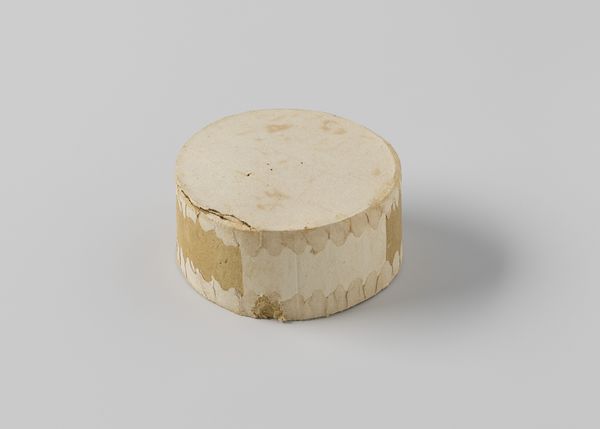
photography
#
still-life-photography
#
photography
#
modernism
Dimensions: width 1.5 cm, diameter 7.3 cm, height 2.3 cm
Copyright: Rijks Museum: Open Domain
Curator: This is a photograph by Gustav Schnitzler, taken sometime between 1900 and 1915. The Rijksmuseum holds this still life titled "Lint van crèmekleurig gaas," or Ribbon of Cream-Colored Gauze. Editor: Well, my immediate thought is, isn't it fascinating how a commonplace object can become so compelling? It is such a study of texture. It looks almost sculptural. Curator: Schnitzler seems very interested in photographic modernism at the time. Think about the changing social landscapes, industrial advancements allowing mass production. Photography offered new ways to represent everyday life, moving beyond traditional painting. Editor: Yes, and the means of production here is interesting. The gauze suggests craft, potentially a textile mill, maybe someone's home workshop. This was shot at a time when photography began its democratization, capturing how the materials of ordinary life became art. Curator: Precisely. And by isolating this roll of gauze, presenting it in a museum setting, we invite viewers to contemplate its place in the burgeoning consumer culture of the early 20th century. Think about where it will eventually wind up: used in fashion or packaging or maybe bandages for soldiers injured during World War I? Editor: I also think about the hands that made it. The subtle undulations hint at the human touch despite its apparent mass manufacture. This gauze had a long life and might even show traces of imperfection due to manual making and the time elapsed. The way in which Schnitzler immortalizes these physical artifacts offers value far greater than aesthetics alone. Curator: I agree. It reminds us that the seemingly simple photographs of this period have complex historical roots. It embodies socio-economic issues of modernity—class, consumerism, labor—rendering them worthy of reflection. Editor: Ultimately, seeing this kind of mundane material elevated provides a unique access point into our collective past.
Comments
No comments
Be the first to comment and join the conversation on the ultimate creative platform.

